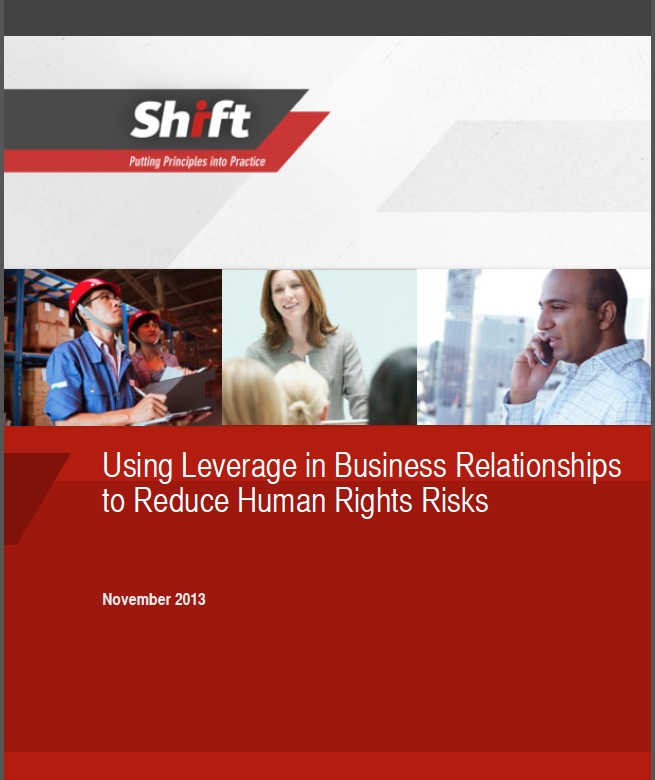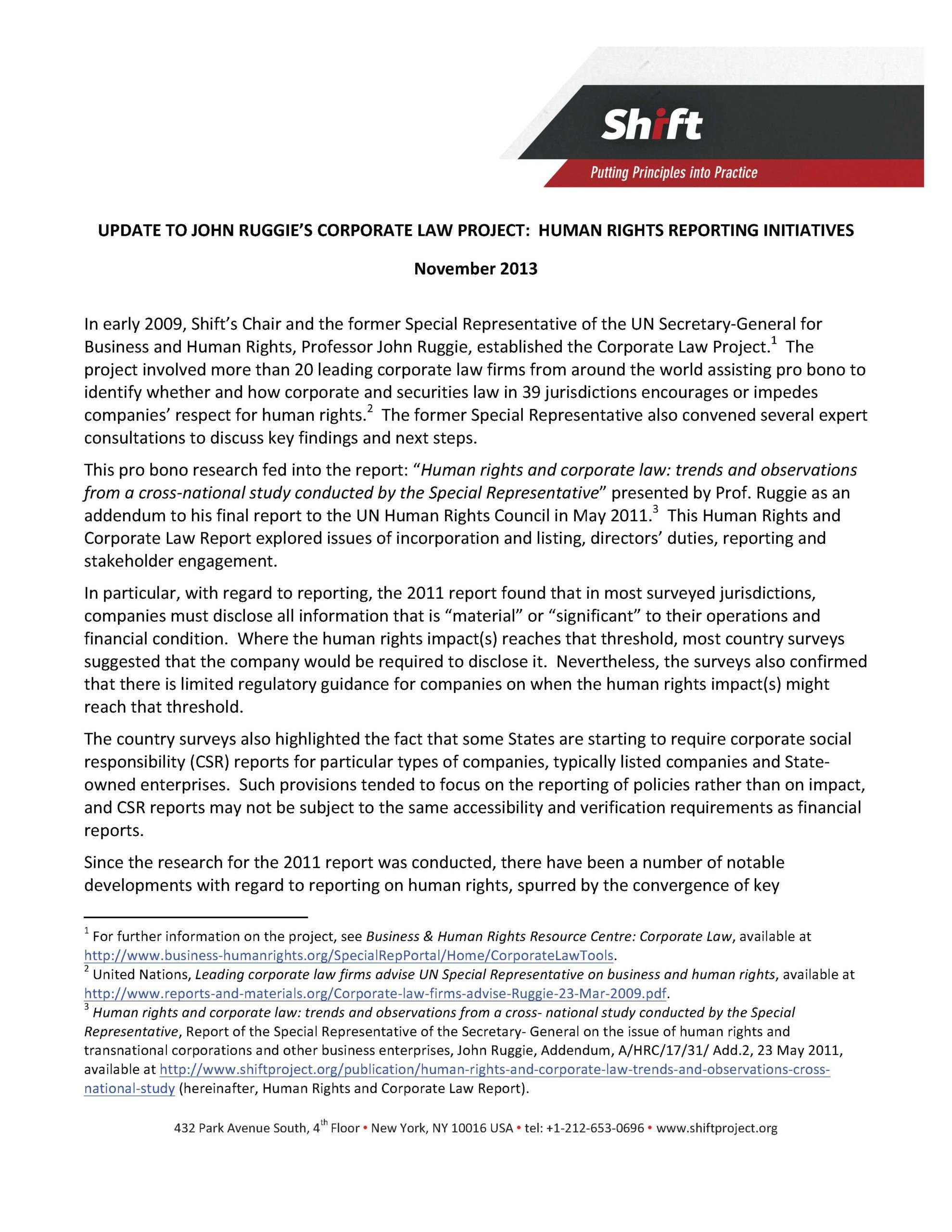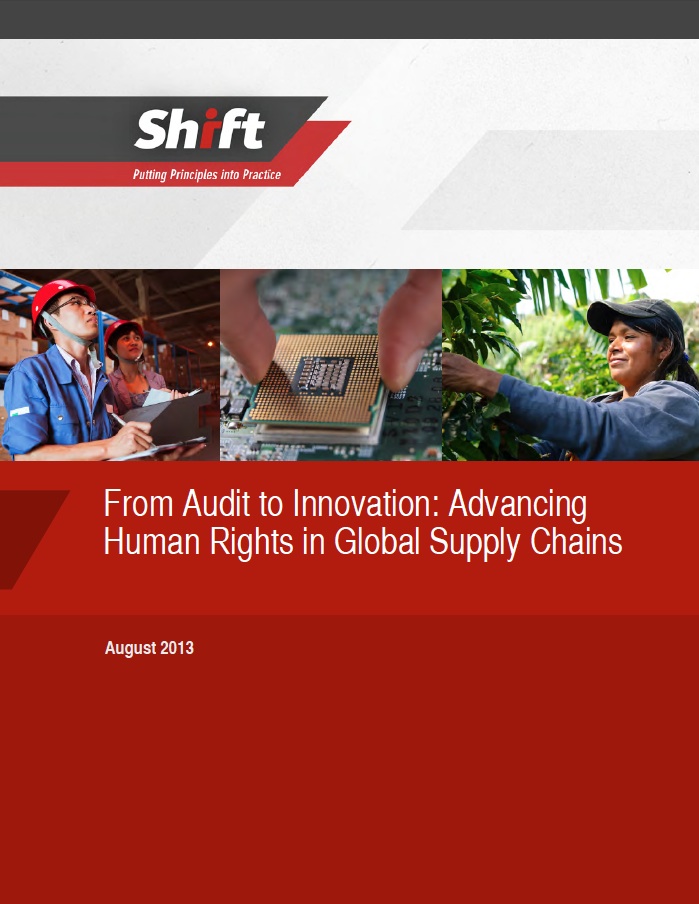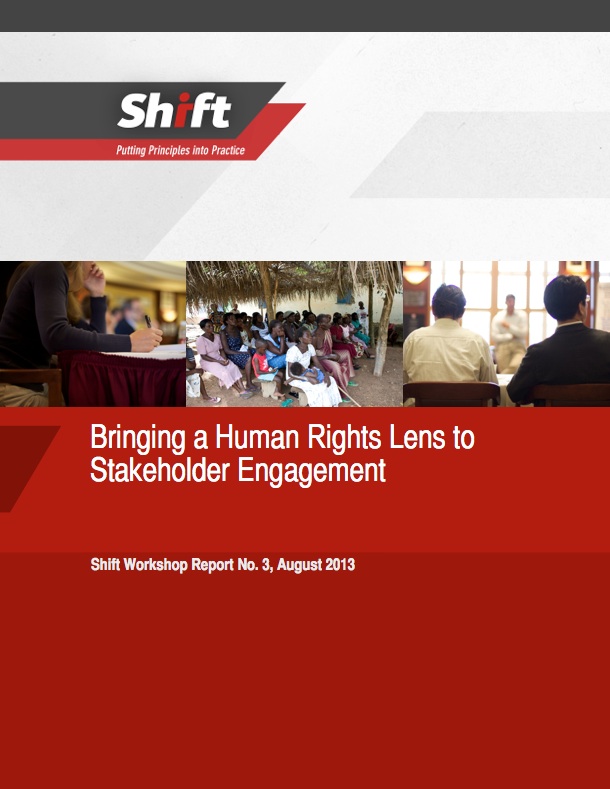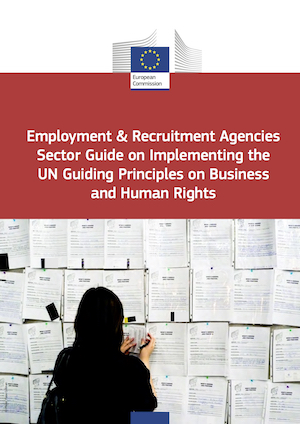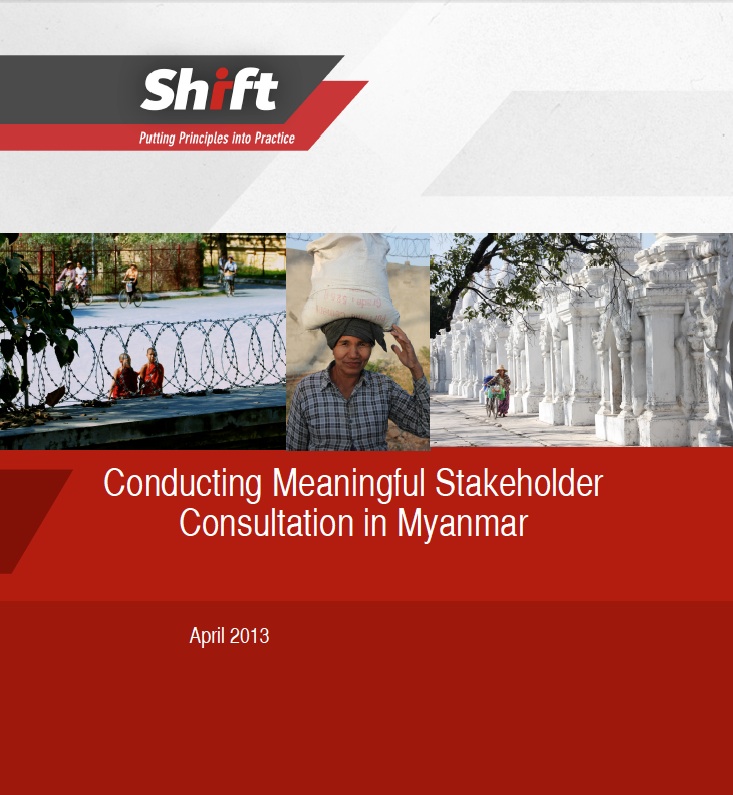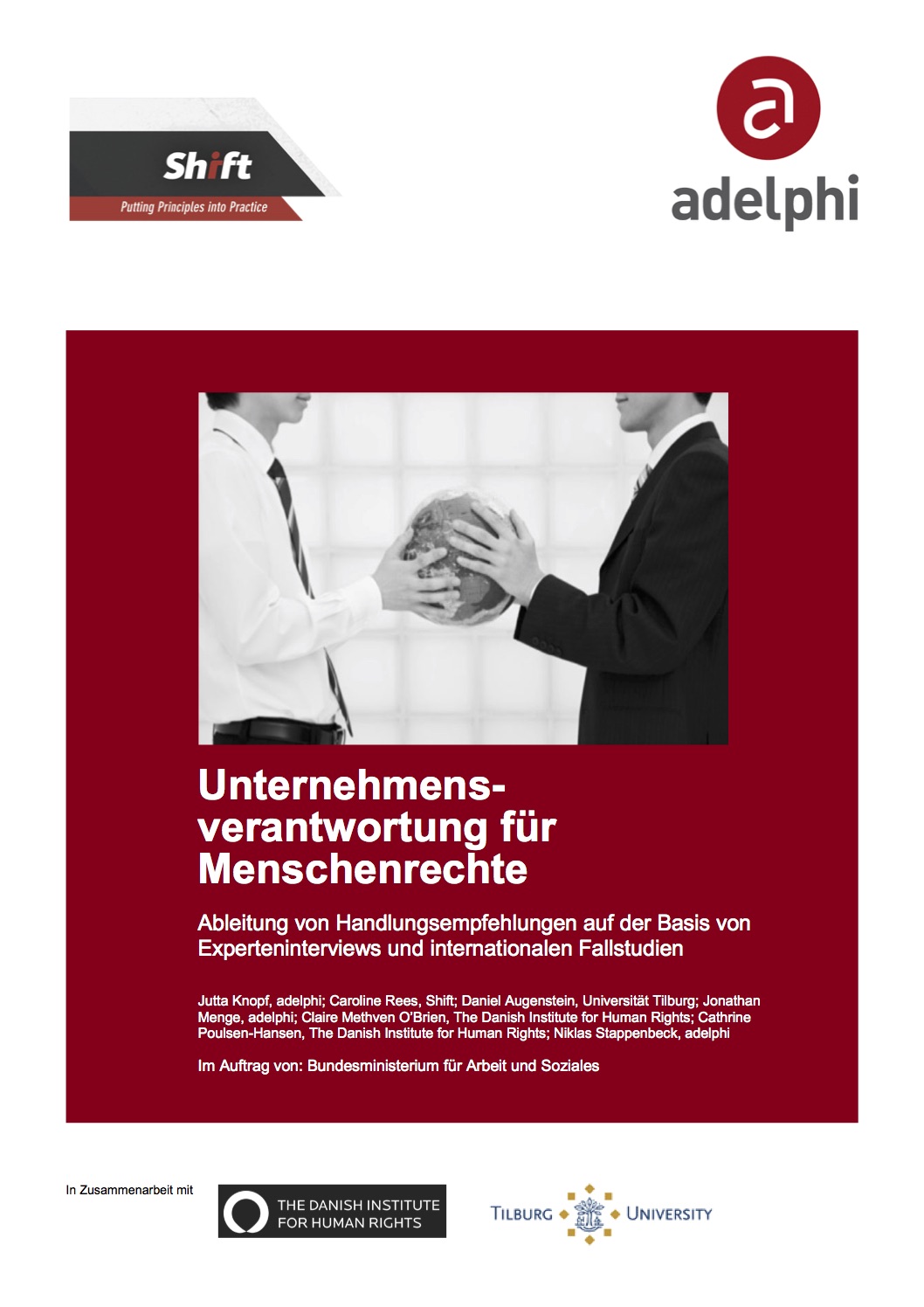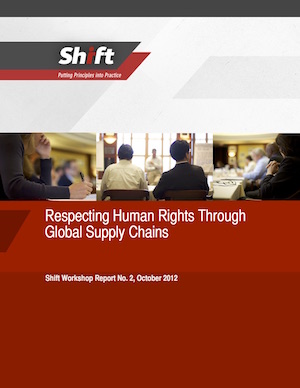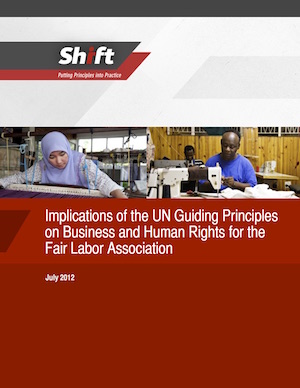Summary
The UN Guiding Principles state that companies may be involved with adverse human rights impacts either through their own activities or as a result of their business relationships. ‘Business Relationships’ are understood to include relationships with “entities in [the company’s] value chain.” As part of their corporate responsibility to respect human rights, companies are expected not only to avoid causing or contributing to adverse human rights impacts, but also to address, “human rights impacts that are directly linked to their operations, products or services by their business relationships, even if they have not contributed to those impacts.”
Adverse human rights impacts can occur at any level of a supply chain – from the first tier of direct or strategic suppliers, all the way down via multiple layers of sub-suppliers and sub-contractors, to those providing the raw material inputs. For some companies, relationships with suppliers are held by their licensees, or may be intermediated by vendors or other agents, creating yet more complex structures. To meet their responsibility to respect human rights, companies need to understand human rights risks at all levels of their supply chain – not only in the first tier.
This resource examines how companies can work to implement the Guiding Principles across their business relationships through the following activity areas:
- Identifying risks: mapping and prioritizing within the supply chain;
- Leveraging and incentivizing sustainable change in suppliers;
- Applying these approaches in sensitive, high-risk contexts;
- Achieving internal alignment within and across the business;
- Supporting grievance mechanisms with respect to supply chains.
Identifying Risks: Mapping and Prioritizing Within the Supply Chain
The corporate responsibility to respect human rights requires companies to conduct human rights due diligence to identify, address and mitigate adverse human rights impacts with which they may be involved through their business relationships. However, in most cases, it is simply not feasible for a company to conduct due diligence for the entirety of its supply chain – particularly where supply chain relationships may number into the thousands, tens of thousands, or more. Companies therefore often need to prioritize those business relationships for which it is most critical to conduct human rights due diligence. However, as a first step, they need to know who is in their supply chains.
Many companies have established, or are in the process of establishing, centralized systems for tracking the “moving target” of their supply chains. While these systems can be housed centrally, the inputs into that system must come from a variety of decentralized sources. Company leaders note the need for internal and external buy-in for a collaborative approach to mapping the supply chain. Internally, this means engaging across the different business functions that might interact directly with the supply chain. Externally, this requires the authentic engagement of one’s own suppliers in the mapping exercise. In developing that buy-in, company leaders emphasize the critical importance of spending as much time on the “why” as on the “how” – conveying an underlying rationale for the importance of mapping the supply chain that resonates for key audiences. Specifically, they have found that simply contractually obligating suppliers to disclose their supply chains, while necessary, has proven ineffective and inadequate.
Prioritizing Relationships for Due Diligence
Given the sheer scale of many companies’ supply chains, those with responsibility for managing human rights issues within supply chains can face a daunting task. The pressing question for many company leaders is simply: Where do I begin?
As a practical reality, most large companies will almost certainly need to prioritize the management of human rights risks within their supply chain. That prioritization may take place at several levels, including prioritizing which areas of the supply chain to map, which business relationships may need to be prioritized for a more detailed assessment of potential human rights risks, and which adverse human rights impacts may need to be prioritized for prevention and mitigation.
In prioritizing which business relationships and which adverse impacts to address, prevalent company practices focus first and foremost on risks to the business. Many companies define their supply chain due diligence priorities based on their “top spend” suppliers or their top tier, strategic suppliers, or other factors that suggest their leverage with the supplier is greatest. Others focus on relationships that pose greatest risk to their own reputation, such as suppliers of products carrying their own brand, or issues where public pressure and mobilization are greatest.
While this can make intuitive business sense, applying a human rights lens to due diligence requires a different set of calculations, instead of, or in addition to, approaches based on business risk. When assessing human rights risk, companies should start by assessing risk from the perspective of potentially affected stakeholders, based on the severity and likelihood of potential impacts. These adverse impacts – the most severe and most likely – may not be occurring among a company’s top tier suppliers, where a company has more leverage to compel mitigation measures, but may be deeper within the supply chain, even several steps removed from a direct relationship with the company, and where leverage is lacking. Learn more about how to identify the most severe potential impacts on people in this video about salient human rights issues.
Managing Human Rights Risks in Supply Chains: Leverage and Sustainable Change
Once potential human rights risks in the supply chain are identified, all companies face challenges in figuring out, simply put, “what works?”. An initial challenge may arise in generating sufficient leverage with suppliers to influence their practices.
Finding and Increasing Leverage
Where a company has identified that it may be linked to an adverse human rights impact through its supply chain and that it has leverage over the supplier in question, the Guiding Principles require a company to exercise that leverage to prevent or mitigate the adverse impact. Where it lacks the leverage, the company should look to increase its leverage in order to be in a position to prevent or mitigate the impact.
Read more on leverage on p.13 in the resource, or check out our dedicated resource on the topic of leverage.
Beyond Compliance Auditing and Towards Sustainable Improvement – What Works?
For many years, companies attempted to manage human rights performance in their supply chains through compliance auditing. However, research points to the clear conclusion that compliance auditing alone is insufficient to promote sustainable improvements on issues of social performance.
This is not to suggest that compliance audits do not have an appropriate role to play in managing human rights performance in supply chains. Audits can serve as a tool for identifying current shortfalls in standards. But they are only ever a snapshot in time. As one company representative summarized, his message to suppliers is: “It’s what happens after the audit that matters. If you improve, there will be continued and expanding commercial opportunities with us. If you don’t improve, then you will not continue to be our supplier.”
Other companies have shifted their emphasis away from a reliance on compliance auditing towards more collaborative approaches, working with suppliers to assess gaps, build capacity, and incentivize sustainable improvements. One company pointed to more extensive “systems gap analysis” audits conducted by some firms, in which the company and the supplier share the cost of the audit.
Read more about going beyond auditing in our dedicated resource on this topic.
Managing Supply Chains in High-Risk Contexts
Multinational companies frequently find that commercial interests make it desirable to initiate or expand operations in high-risk contexts. For extractive companies that have to locate themselves where the natural resources are, operating in such contexts is increasingly unavoidable. High-risk contexts typically include conflict-affected zones, where security issues are prevalent, the state is unable to fulfill its duty to protect, and the rule of law is weak. They also include other contexts with clear and severe risks to the fulfillment of human rights, which may be denied either in law or in practice.
While the same principles for managing human rights risks in supply chains more generally apply also in these contexts, the costs of not getting it right can be much higher – not only in terms of the reputational risk to the company, but also in terms of the potential severity (scale, scope and irremediability) of adverse human rights impacts on individuals.
Learn more about human rights due diligence in high-risk circumstances in our dedicated resource on this topic.
Internal Alignment Within and Across a Business Enterprise
While discussions of human rights challenges in supply chains often focus on the suppliers themselves, there are important dimensions internal to the buying company that can increase or reduce human rights risks. Central to these are the company’s own purchasing practices. There may in some instances be inherent tensions between the commercial interests that guide buying decisions and the avoidance of human rights harms. If left unreconciled, these can place the company in a situation of actively contributing to human rights impacts by its suppliers.
Examples may include making late changes to the design of a product or to the volume or an order without taking into account the consequences for the supplier in terms of time and costs, which may mean the company could contribute to any resulting adverse impacts such as excess hours, unpaid overtime or illegal sub-contracting. Or, for an extractive company sourcing security services, poor decisions or misleading messages with regard to the treatment of local communities that it expects from the external security providers may leave the company in the position of contributing to any adverse human rights impacts that result.
Embedding the Responsibility with Those Who Make Purchasing Decisions
In the experience of many companies, reconciling the internal tensions that can exist between commercial drivers for procurement decisions and the company’s responsibility to respect human rights can only occur if that responsibility to respect is embedded with those who make procurement decisions.
Some consumer goods companies – in which purchasing departments play a central role in creating value for the company – have chosen to locate the human rights function within those departments, or have allocated specific human resources to those departments to address these issues from within. In another such company, the human rights function reviews all purchase orders after they have been submitted and compares them against a rating system. If it determines that the order might be inconsistent with the company’s human rights commitments it has the authority to cancel or reroute the order.
Ultimately, however, the successful integration of human rights considerations comes down to individual buyers making individual decisions that need to incorporate this added human rights dimension into the business formula.
Read more about strategies to embed respect for human rights in procurement functions on page 20 of this resource.
The Role for Grievance Mechanisms with Respect to Supply Chains
A basic requirement of the Guiding Principles is that companies engage actively in ensuring access to effective remedy for adverse human rights impacts they cause or to which they contribute. Many companies, industry- and multistakeholder initiatives require that grievance processes are available at the level of suppliers as well. However, by their own admission, these efforts have not generally included practical guidance to suppliers; nor conveyed the value of effective complaints processes; nor ensured that their quality is sufficient.
Read more about the business case for suppliers to have effective grievance mechanisms, as the case for companies to support supplier-level grievance mechanisms, on page 25 of the resource, or our dedicated resource on grievance mechanisms.
